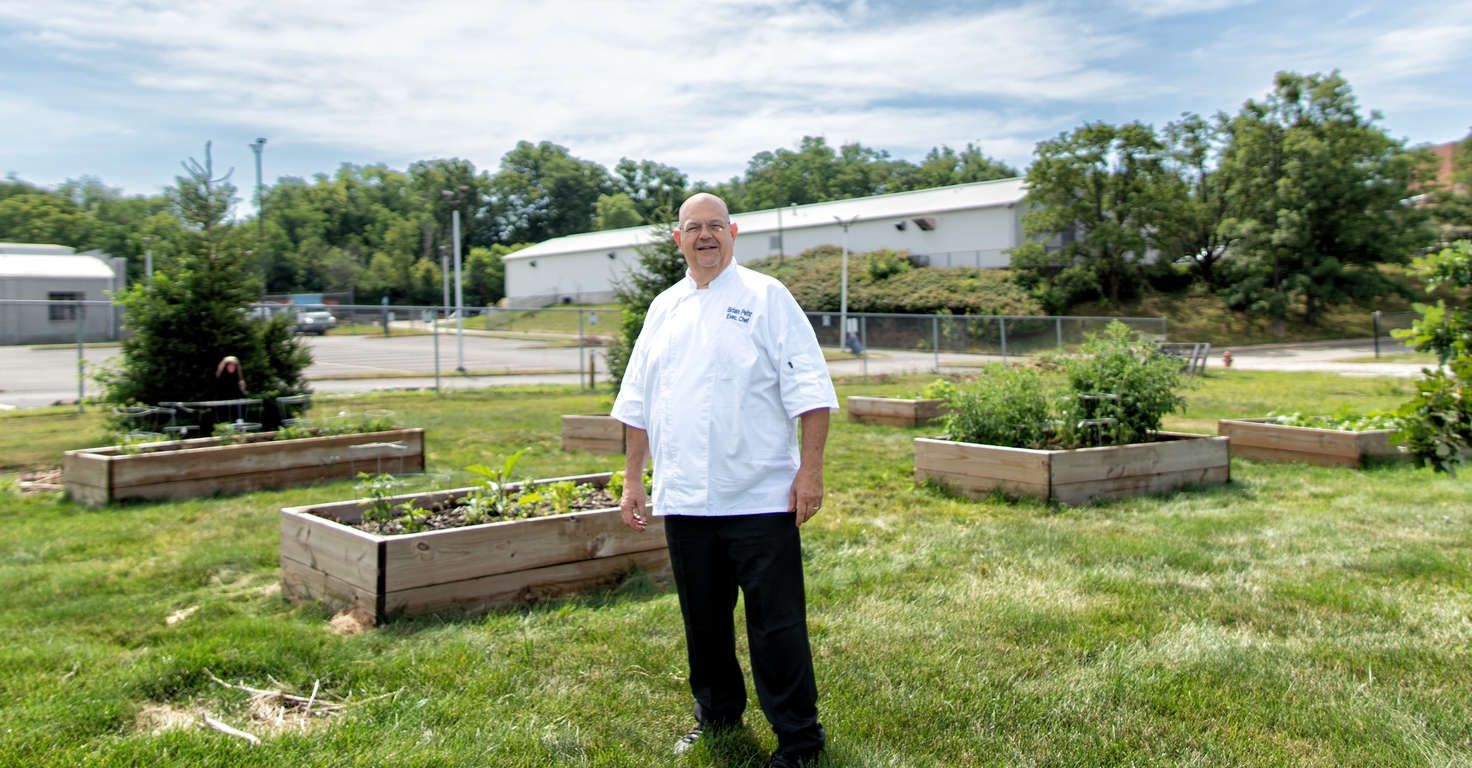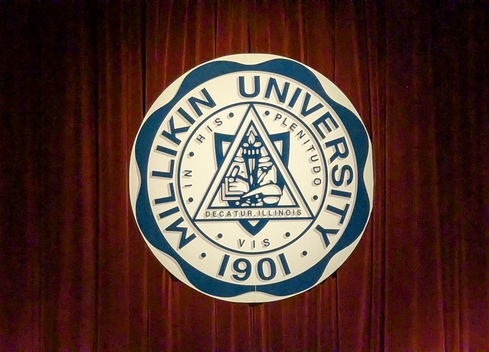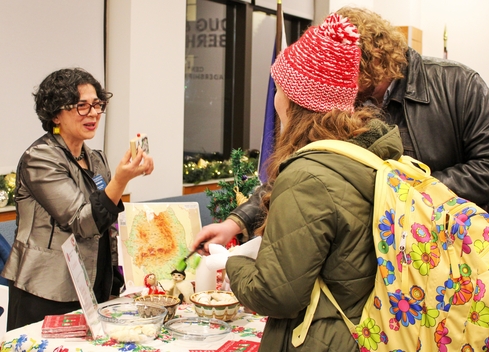DECATUR, Ill. – Take a walk behind the Workman Family Softball Field on Millikin University’s campus, and you’ll find the first steps of what Millikin Executive Chef Brian Pehr hopes will be an oasis of gardening projects, featuring a wide variety of vegetables that Big Blue students enjoy.
Pehr has worked at Millikin for 15 years for Aramark, Millikin’s food service management company, and serves as the Executive Chef for Millikin University’s President. He’s a fixture in the University Commons Dining Hall, joking with students as he provides them with delicious dishes.
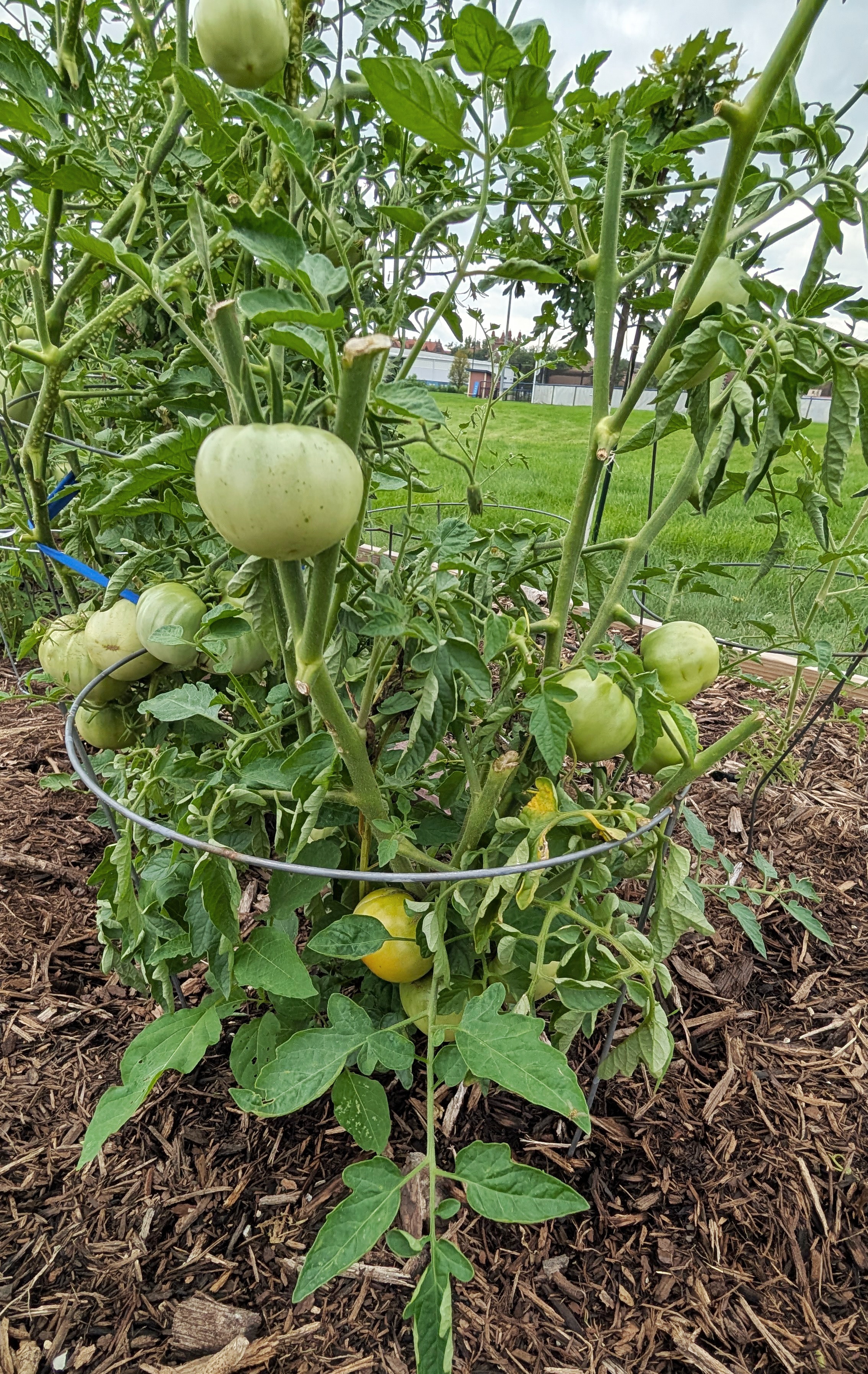
A previous Millikin Garden was located on the top floor of the Leighty-Tabor Science Center, which had more beds, but they were smaller, making the crops more susceptible to drying out in the hot weather. The new beds are deeper, allowing them to hold more moisture and survive the Illinois summer heat more easily.
“I always hear people saying that we should be making a difference, and I thought, how can I make a difference? So that's why we started up on the roof,” Pehr said. “In the two years we were over on the roof, we were able to take a retail value of over $1,000 a year off the roof.”
Helping Pehr manage the garden is Todd Matthews, who has worked at Millikin for 10 years as a Utility Worker, helping to maintain the grounds, plants, and water the crops.
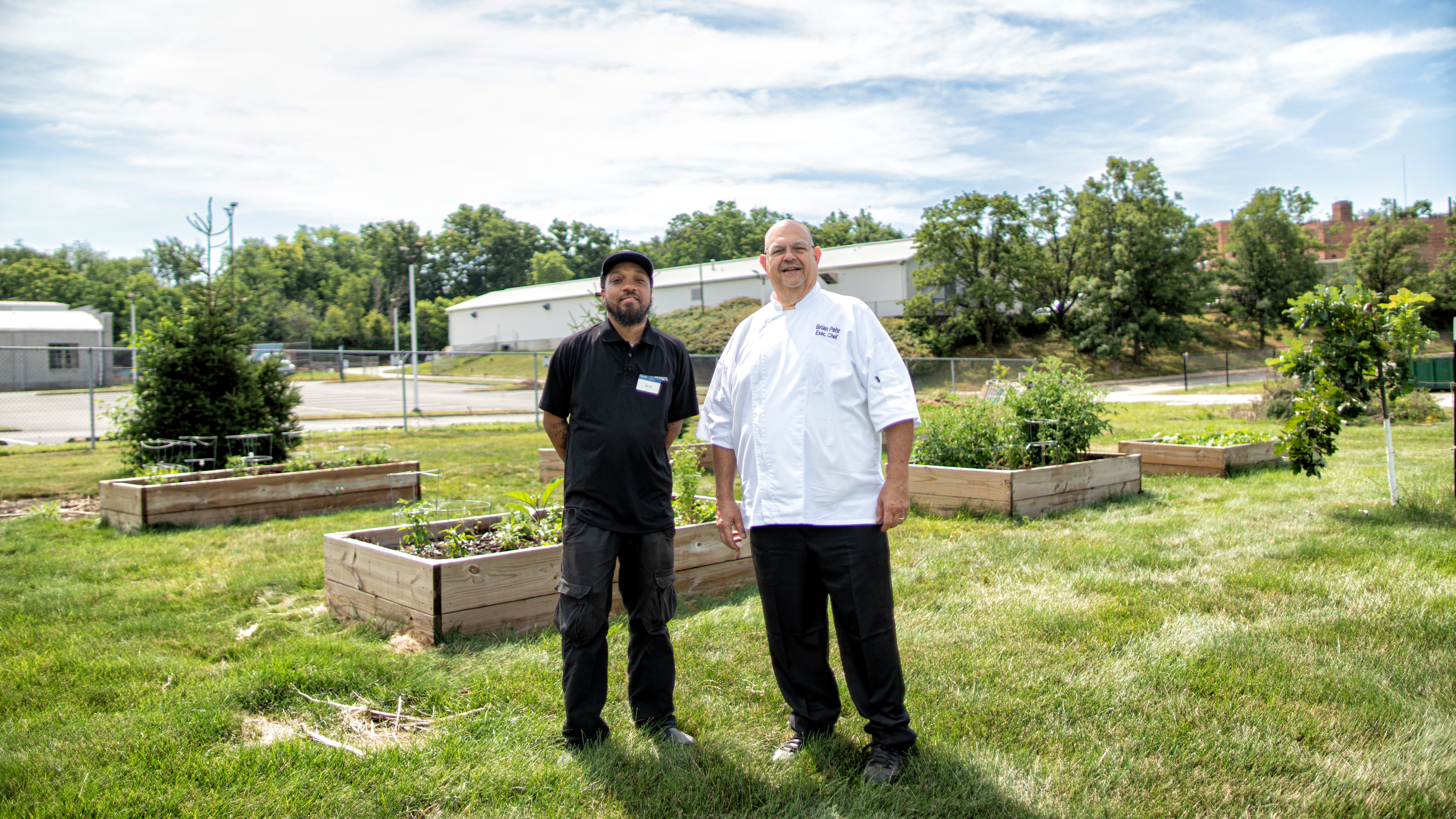
“Todd takes care of my storerooms, and he helps make sure that the food is rotated and safe and put away correctly. He is my partner in this whole thing, and his involvement in the garden has been all about wanting to learn more. He's like a sponge, and so I feel like I’ve been able to change one mind,” Pehr said. “That's all I'm trying to do, just trying to make people think a little bit differently. You can think, I could grow a tomato plant. I could grow a pepper plant. I could grow some herbs.”
Pehr and Matthews planted their first crops in mid-May and plan to plant a winter crop in late October/early November. The initial planting includes pumpkins, cabbage, tomatoes, and radishes. The first crop of radishes has already been harvested, and students taking part in the Orientation and Registration sessions in July were able to enjoy them in the cafeteria buffet.

“We're going to do pickled radishes and different things with radishes to make new foods to introduce to the students. Everything that we grow out of goes directly into the cafeteria to do something with,” Pehr said. “Everything's going to get cooked, and we will make infused vinegars with our herbs. We'll cook with our herbs, and the tomatoes will be pizza sauce for our pizza station.”
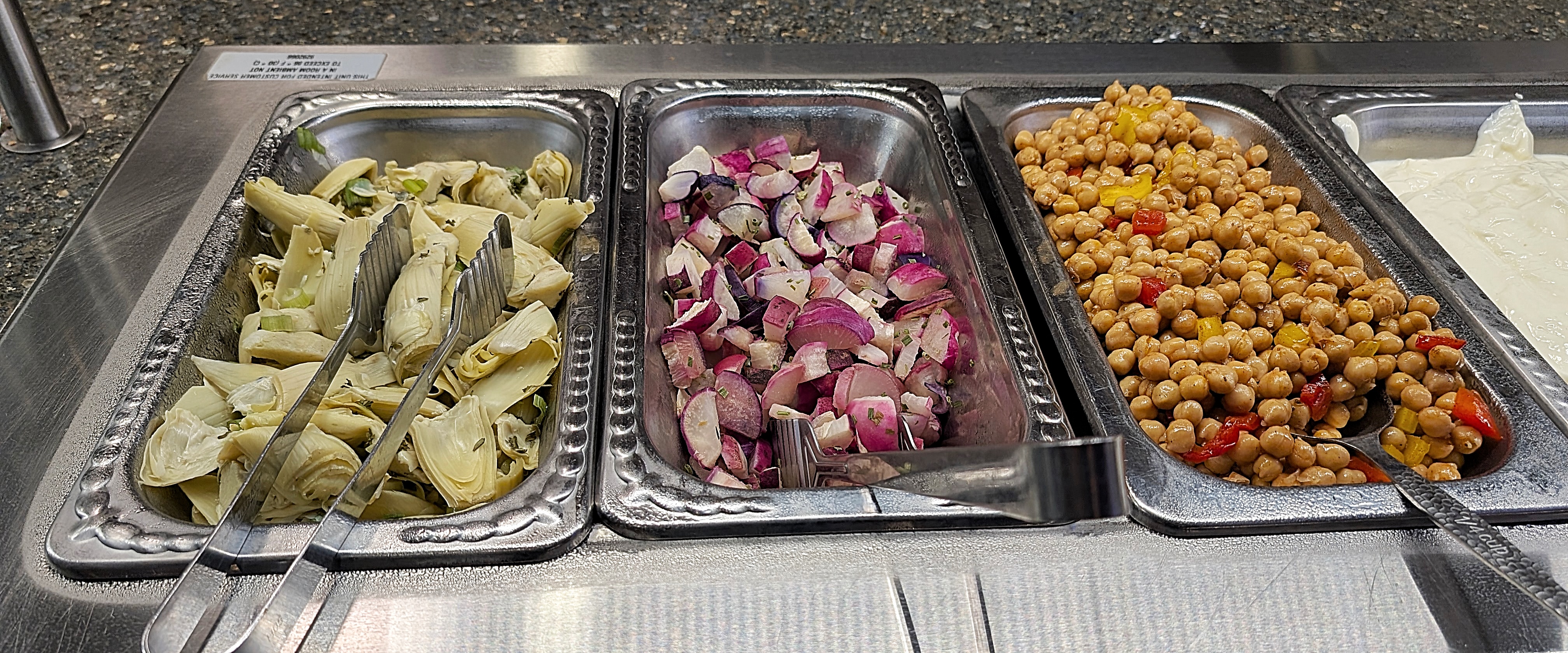
Another benefit of the garden is a compost project that utilizes waste food from the cafeteria, as well as yard refuse, which will continue to fertilize the garden beds for years to come.
“It goes into the compost pile, it cooks down, then it goes back and refeeds our beds. We're going to plant radishes, carrots, onions, and I think garlic for the winter.
Matthews has also found a growing interest in gardening since harvesting the first crops from the beds.
“I would come over and water, and once you could see the progress of what was happening, I grew to like it, I started enjoying it. Ever since, I’ve been wanting to come over and engage, see what needs to be done, and lend a hand. I’ve learned a lot about how far to plant the seeds, when to water and how much, and when to pick. I'm still learning new things every day. I love coming to Millikin, whatever we've got going on, whether it's for food in the cafeteria, or the garden, or anything that we’ve got going on, I'm all for it.”
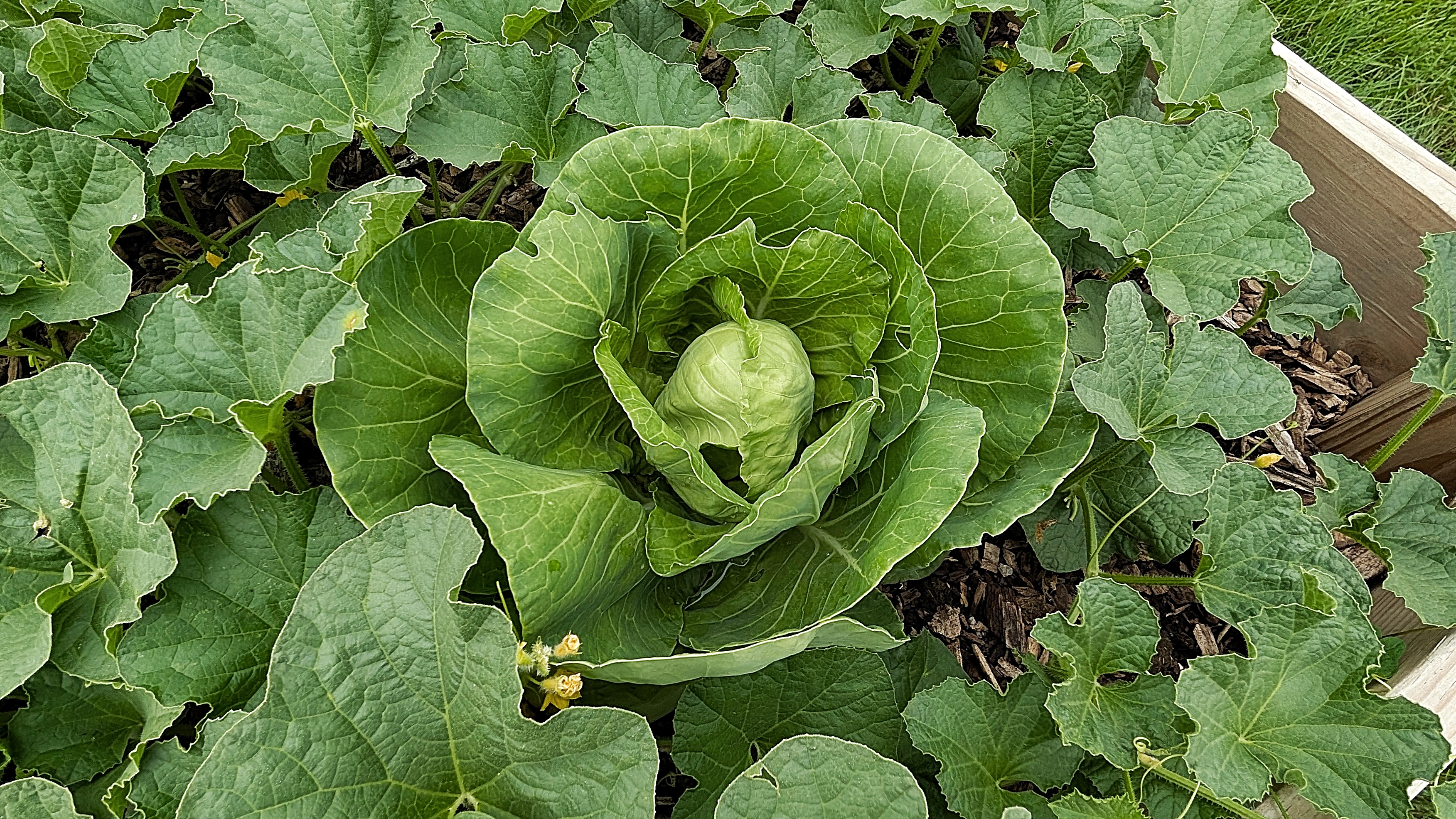
In the long term, Pehr plans to collaborate with the Biology Department to develop a unique heirloom tomato variety for Millikin, which he hopes will inspire a love of gardening in local schoolchildren by providing them with plants they can grow at home. He also hopes to begin a fundraising campaign with all the students he has known over his 15 years at Millikin to add more beds and possibly a hot house.
“If you give students tomatoes that they can grow at their house in a pot, and suddenly, now what can we do? We are feeding our neighbors now. They are asking, can we grow two tomato plants next year? All of a sudden, you're starting to make a change in a philosophy,” Pehr said. “Then it's a neighbor helping a neighbor. A friend helping a friend. Helping someone in need who has less than I do. I can make a difference, and we can answer the question how can food work to solve problems in the world?”
